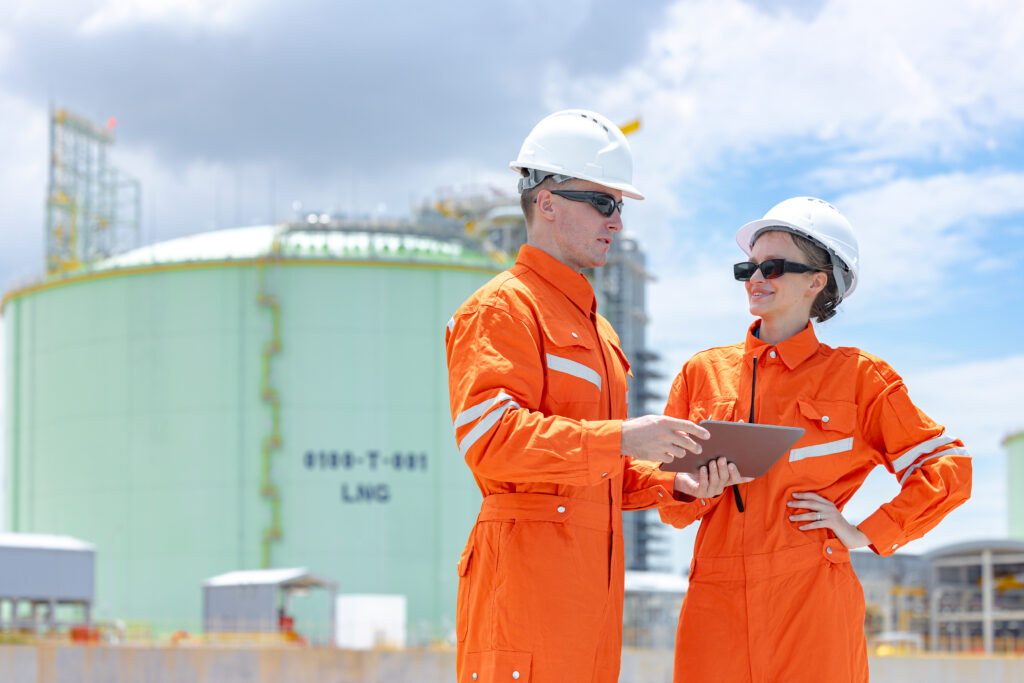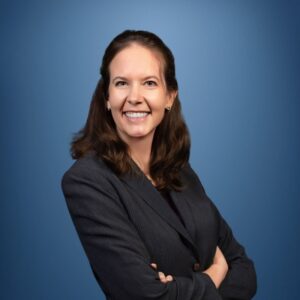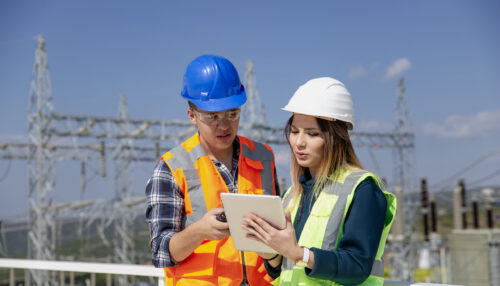
Bringing the Next Methane Blindspot into Focus
How LNG Shipping Contributes to Methane Accountability
November 19, 2025
By: Leena Thomas, Blake Ericson, and Elizabeth McGurk
Methane has moved beyond an environmental topic. It’s fast becoming the currency of credibility in the energy industry. While production has received the spotlight, the shipping leg of the LNG value chain is the next blind spot coming into focus.
Driven partially by the European Union Methane Regulation (EUMR), which applies methane emissions reporting and intensity limits on liquified natural gas (LNG) imports, oil and gas operators are starting to measure what was previously largely uninvestigated: emissions during loading, transport, and unloading.
By stacking shipping emissions with upstream well-to-water data, operators can build a defensible well-to-wake emissions supply chain profile — one that turns transparency into a competitive edge.
Why LNG Shipping Matters
Methane emissions are under the microscope as global stakeholders demand accountability. The oil and gas industry is the largest man-made source of methane emissions, and LNG plays a critical role on a global scale. Estimates suggest that between 15-30% of global natural gas production ultimately moves as LNG.
The U.S. leads the globe in LNG exports with Canada quickly expanding capacity. The US is also rapidly increasing its LNG export capacity. Europe imports roughly 90% of its natural gas as LNG.
For the EU, controlling methane along the supply chain is a direct lever to meet climate commitments, and starting in 2027, EU importers must report methane emissions associated with imported energy products, like LNG, coal, and oil, with intensity limits applying in 2030.
As a result, operators are seeking to better understand the emissions associated with LNG shipment, which have not previously been required to be measured or reported.
Advantages from Measurement
Montrose partnered with global operators to understand emissions from LNG shipments. Our campaigns to date focused on two key areas:
Vessel Loading & Unloading:
Fugitive component leak detection and quantification.
Engine Emissions:
FTIR stack testing for incomplete combustion (“methane slip”) on main engines and auxiliary generators.
Leak Detection and Measurement
A single LNG vessel survey takes at least eight hours. Technicians use an optical gas imaging (OGI) camera to detect leaks from fugitive components (i.e. valves, flanges, connectors, etc.), then quantify them using a high-flow sampler and/or a flame ionization detector (FID).
Our surveys to date reveal there are generally ten or fewer fugitive equipment leaks identified during loading or unloading activities, but the leaks can be substantial.
Leading operators use this data to take immediate repair actions, demonstrating how measurement data can do more than ensure compliance; it drives proactive maintenance and emissions reduction.
When preparing annual emissions estimates, operators can refine assumptions using documented repair times and pressure-based leak durations, ensuring the reported footprint is accurate and defensible.
The same measurement techniques used to detect and measure emissions from fugitive emission component leaks can often be deployed to measure emissions from vents (dependent on vent stream volume, temperature, and moisture content).

FTIR Incomplete Combustion (Methane Slip) Testing
Fourier transform infrared spectroscopy (FTIR) stack testing is the best-in-class option for accurate methane slip emissions quantification. Our teams spend several days, sometimes weeks, aboard LNG vessels, measuring emissions across main engines fueled by boil-off gas (BOG) or low-sulfur fuel oil (LSFO) and diesel auxiliary generators. This allows crews to collect data in multiple operating conditions, and often multiple locations, that have been found to influence combustion efficiency, including engine load.
Incomplete combustion emissions vary significantly based on fuel type, load, and engine make & model. Montrose has found that BOG fuel has shown the lowest methane emissions across all loads, with LSFO-fueled primary engines and diesel auxiliary engines emitting significantly more. The variability observed across fuel types underscores why testing in multiple conditions is essential.
Operators calculate annual emissions estimates from the methane slip using a combination of FTIR stack test results and operational process data. Direct measurement has shown that measurement-based emissions from LNG vessels often differ from those calculated with dated emission factors. Without measurement-based verification, operators risk mis-stating their true methane footprint.
Why Early Action Matters
Operators are balancing business objectives with a changing global environment, stakeholder pressures, and emerging technology that is making methane emissions visible remotely.
Operators that invest in rigorous measurement now are doing more than preparing for compliance. They’re gaining operational intelligence, protecting market access, and building credibility with investors and partners. Methane transparency is evolving into competitive currency, and LNG shippers have a clear choice, lead or follow.
Montrose teams are already helping global operators get ahead of these expectations.
Contact us to learn how Montrose can help you achieve your emissions measurement and reduction goals.
Continue Reading
 Elizabeth McGurk
Elizabeth McGurk
Methane Sector Leader
Elizabeth is a highly experienced air quality program manager with expertise in the fields of greenhouse gas (GHG) quantification and mitigation, oil and gas sustainability framework implementation, regulatory analysis, and auditing. Her passion is in leveraging measurement-informed data to inform effective mitigation efforts, and she is proud to have supported OGMP 2.0 projects worldwide. Elizabeth has a strong background in delivering technical trainings and excels in distilling and presenting complex information, impacts, and solutions to various stakeholders. She leads diverse teams and has conducted complex environmental projects, both regulatorily and voluntarily driven, for clients in carbon-intensive industries. She specializes in assisting clients with Scope 1, Scope 2, and Scope 3 GHG emissions quantification and reporting as well as in developing practical, real-world carbon reduction strategies.
 Leena Thomas
Leena Thomas
Business Development Manager
With over a decade of dedicated experience in environmental laboratory services and three years specializing in air quality services, Leena Thomas brings a wealth of knowledge and expertise to the field. Possessing a Master’s degree in Environmental Science, Ms. Thomas has leveraged a solid foundation in scientific principles to excel in sales, bridging the gap between technical solutions and client needs. Ms. Thomas has spent the last 20 years honing her skills, working with diverse clientele ranging from government agencies to private corporations. She has developed a keen understanding of environmental regulations and compliance standards, assisting clients in navigating complex regulatory frameworks while offering innovative solutions to their environmental challenges.
 Blake Ericson
Blake Ericson
Business Manager
Blake has over a decade of experience in air quality management, engineering, and regulatory testing, with a primary focus on Fourier transform infrared (FTIR) technologies. He also brings a strong background in financial forecasting, client growth strategy, and performance analysis to support business expansion and customer retention. He received his BS in Biochemistry and MBA from Central Michigan University.



![Calculating-Methane-Intensity-MiQ[1]](https://montrose-env.com/wp-content/uploads/2025/07/Calculating-Methane-Intensity-MiQ1-scaled-500x286.jpg)
